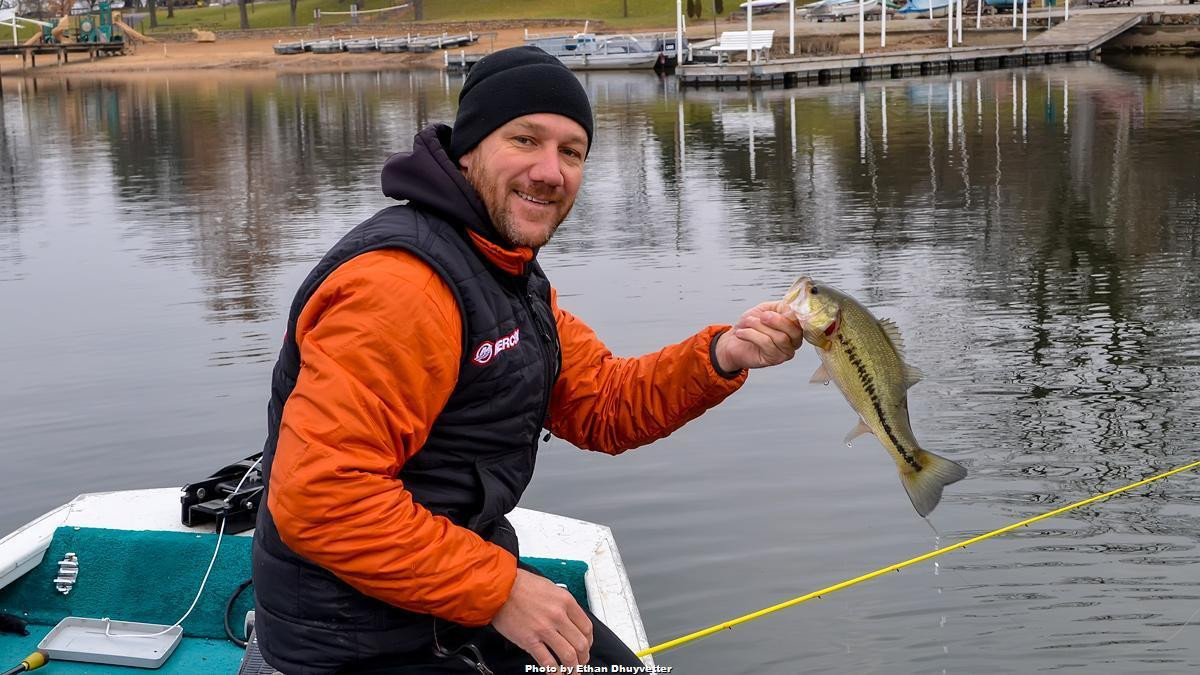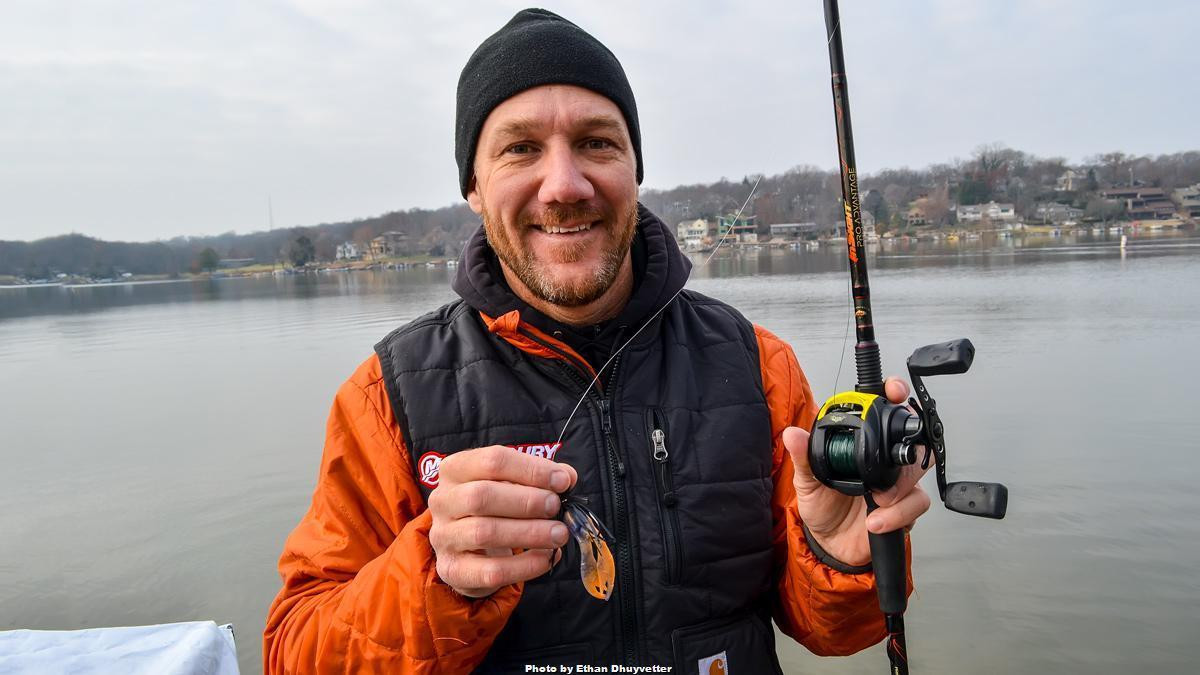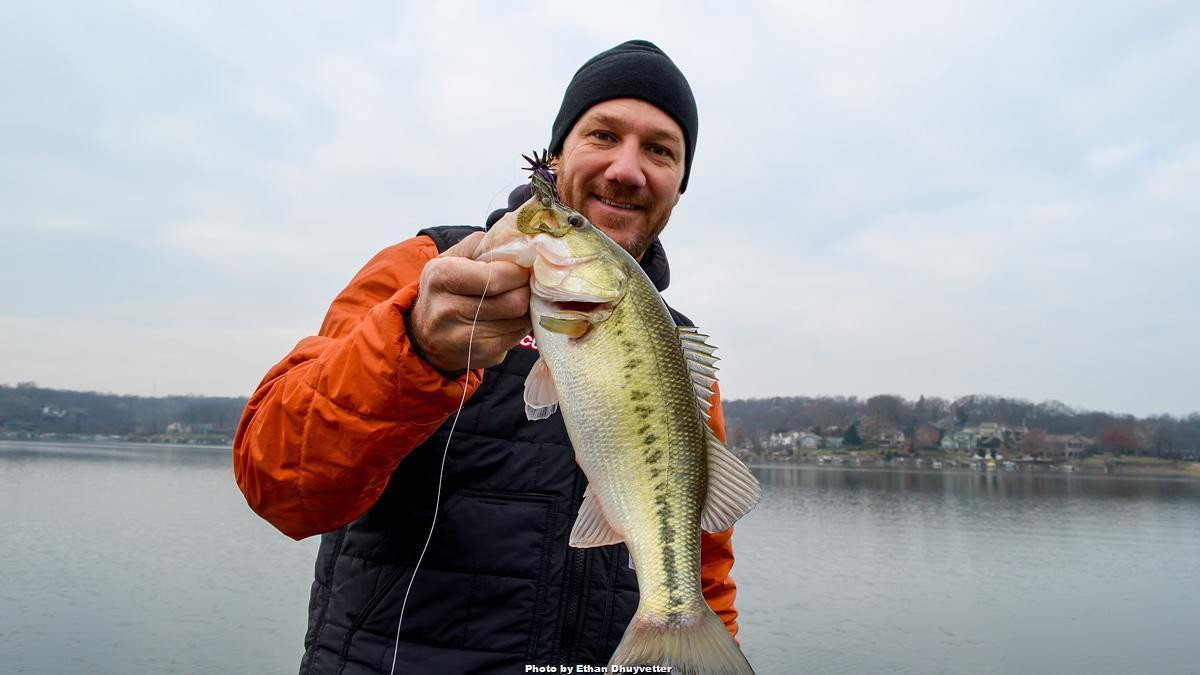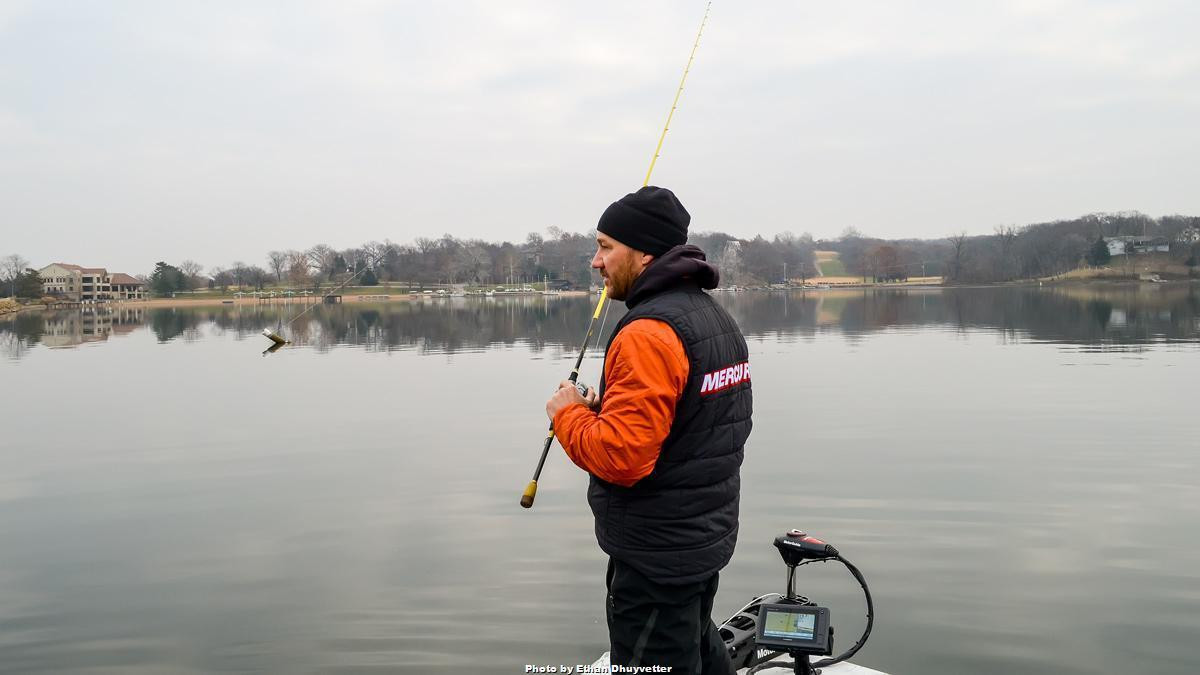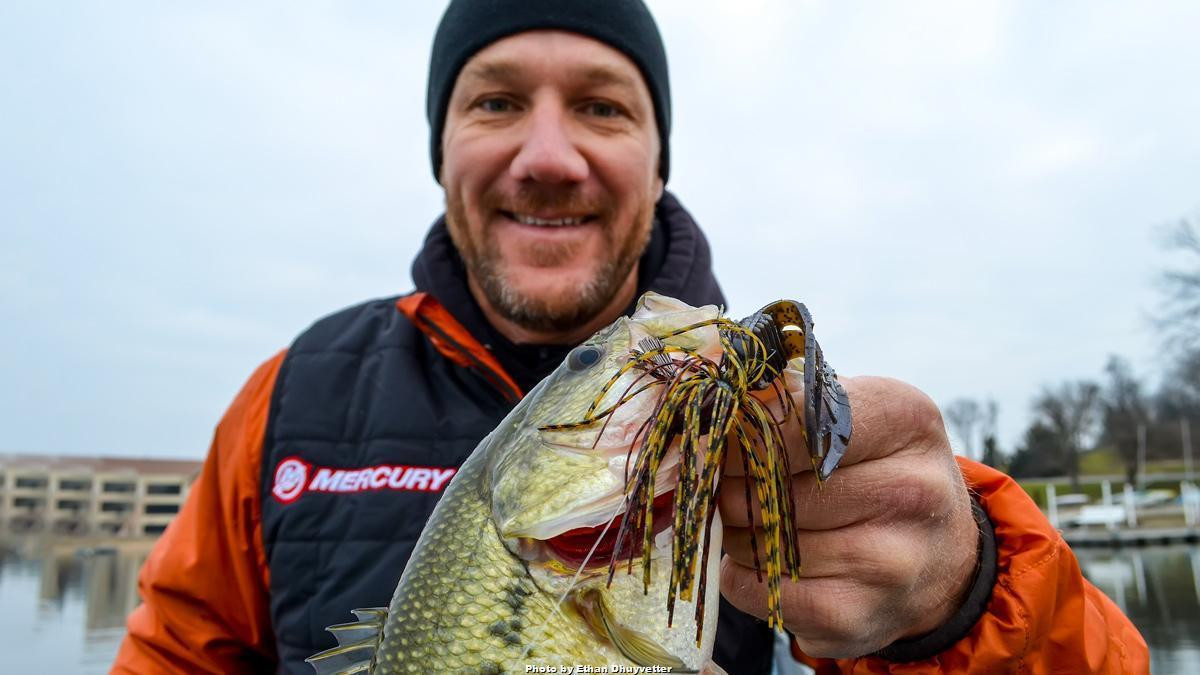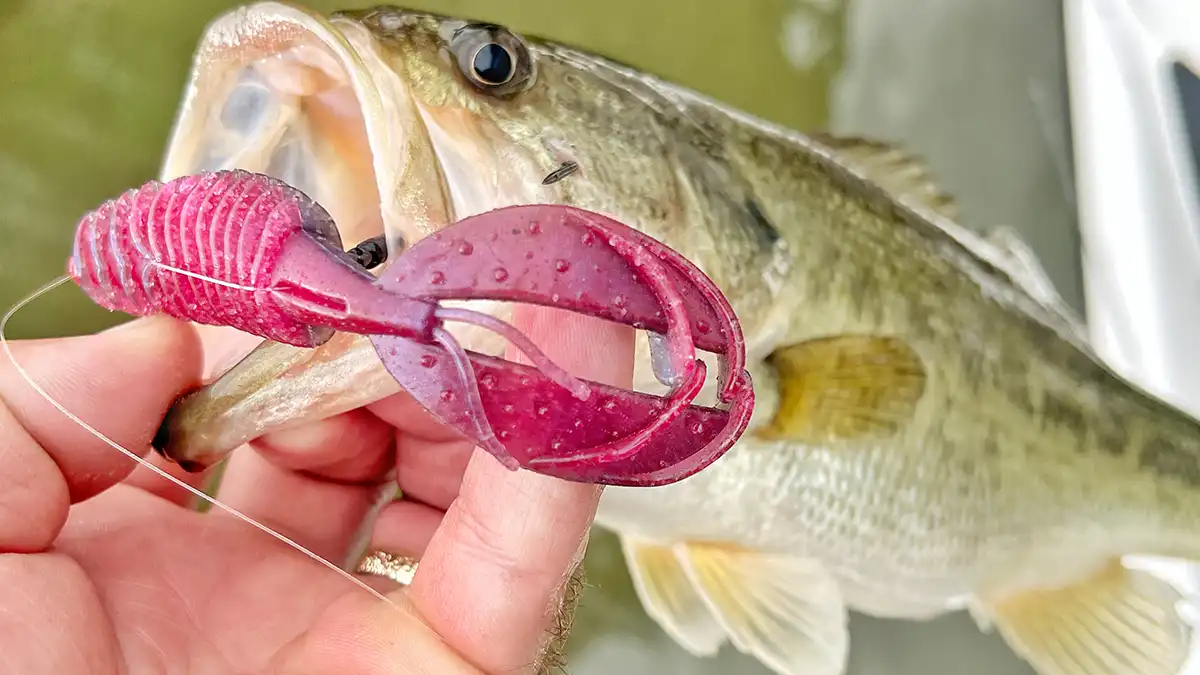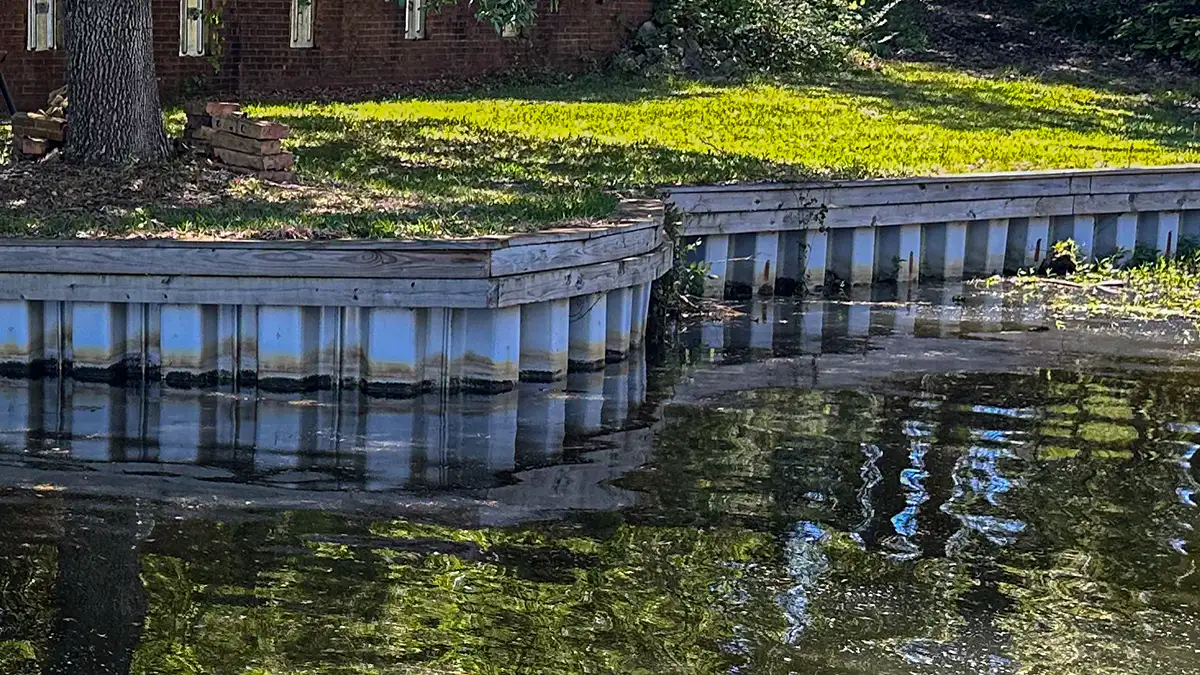Winter comes and goes. But bass fishing doesn’t go away just because the water temperatures drop, at least not for those of us that still have open water. As the water temperatures continue to drop, and bass become more and more lethargic, the multitude of fishing techniques that effectively work become limited.
Popular winter choices include jerkbaits, umbrella rigs, jigging spoons and often-overlooked skirted jigs. Weather, water clarity, lake history and many other factors dictate which is going to work best on any given day. According to Elite Series pro Brent Chapman, a skirted jig can be one of your best bets to catch quality bass for these cold winter months.
“While you might be limited with other presentations to the speed you work your bait, a jig can be presented at any speed you want,” Chapman said. “It is a good choice when you need to thoroughly work an area where you know fish live.”
One type of area that Chapman noted in particular, that holds fish throughout the winter is rock due to the fact that it retains its warmth more so than other types of structure.
Weather conditions
Living in the Midwest, Chapman runs into a large variety of weather conditions throughout the winter. He notes that the jig bite excels in certain situations, while he may opt for another lure when the weather isn’t right.
“The sun plays a big role in jig fishing,” Chapman said. “If the sun is out, the bass will actually get a lot shallower than you might expect, sometimes in just a foot or two of water, but oftentimes suspend. If it is overcast, they will generally be farther off the bank, but will usually hold closer to the bottom. Basically, if it is sunny, I will head shallow and throw a jerkbait, and if it is overcast, I will hold off a bit and throw a jig.”
Whether sunny or overcast, Chapman keeps both a jig and a jerkbait at his side, and throws both until he figures out which the bass prefer on that day. As a general rule of thumb, Chapman prefers to throw a jerkbait until he finds a good population of fish, and then slow down and fish it thoroughly with a jig.
Where to start
In the winter, you can generally catch fish both main-lake and in areas located further back in a creek. It is more important to Chapman that he has the following in his area when searching for winter jig bass.
- Good water clarity – “Catching fish in cold dirty water is not an easy thing to do,” said Chapman. “I try to fish mostly clear or stained water when the water is less than 50 degrees.”
- Rock – Hard structure is important for the colder months, as it holds its warmth better than other areas. Rock is some of the most abundant and warmest of the hard structure options. If it also has some kind of cover on it, such as a brush pile or laydown, it can be even better.
- 45-degree banks – In the Midwest especially, this angle of a shoreline is traditionally one of the best places to catch bass during the winter and early spring months. It will be at its best if there is a channel swing nearby. Steep drops are always a good option, so the channel swings help bass stay comfortable on certain 45-degree angled banks.
- Shad and bait activity – Chapman notes that if there is an abundance of forage in an area, it will be much more likely that bass use that spot. He keeps his eyes on his Garmin graphs to look for shad activity.
What jigs work best
While the market is flooded with various jigs of all colors, shapes, and sizes, Chapman keeps his jig selection fairly simple. There are two categories of jigs that he will choose from-heavy or light.
Heavy jigs
Chapman prefers to use bigger jigs in the 3/8 to 5/8-ounce sizes.
“In the winter, bass prefer to eat bigger baits,” said Chapman. “I use a 5/8-ounce jig more than any other size. I feel more confident in this size, and feel that I can effectively present it at any depth.”
- Head style – Structure and football-type jigheads seem to work best for crawling over rock and other hard structure.
- Skirt color – “I keep my color selection very simple,” said Chapman. “I like green pumpkin or brown colors for clear water, and black and blue for stained or dirtier water.”
- Trailer – Chapman generally prefers to go with the Tightlines UV Bubba Craw Trailer in the 4-inch size for these larger jigs. He also notes that twin tail grubs can be pretty productive.
- Equipment – For these larger jigs, Chapman likes to go big with his rod choice, which is a 7-foot, 6-inch flipping stick with 16 to 20-pound Gamma Fluorocarbon. He always uses a high speed reel, so he can pick up line fast and deliver a powerful hook set.
Light jigs
When the water is very clear, the lake is highly pressured, or the fishing is just flat-out tough, Chapman will opt for a lighter 1/4- to 3/8-ounce finesse jig.
- Head style – Again, roundhead or football jigs that can work through the many crevices of a rocky bottom will work best.
- Skirt color – The skirt color is still the same, while it will generally be the brown or green pumpkin to keep it as natural as possible.
- Trailer – For these smaller jigs, Chapman will downsize to the Tightlines UV Bubba Craw Trailer in the 3-inch size.
- Equipment – A 7-foot or 7-foot, 2-inch rod in the Medium Heavy to Heavy power is what Chapman will opt for with the smaller jig choices. He will also drop his Gamma Fluorocarbon size to 10 to 14-pound test, depending on how deep he is fishing.
How to Fish it
The good thing about this presentation is that you can present it at any speed you want. Smaller hops on the bottom and slow-dragging your jigs will likely produce the most bites.
Lastly, rate of fall is a very important factor this time of the year.
“People seem to get too hung up on jig size in my opinion,” said Chapman. “I can make my 5/8-ounce jig fall at the same speed as a 1/4-ounce jig if I use the right line and trailer sizes. Usually, a slow rate of fall is best in the winter, but I will try fast as well to try to get a reaction strike.”
While the winter can be some of the toughest fishing of the year, you can still catch bass, and if you utilize the ever-popular skirted bass jig, you might just catch the giant you have been waiting for.



